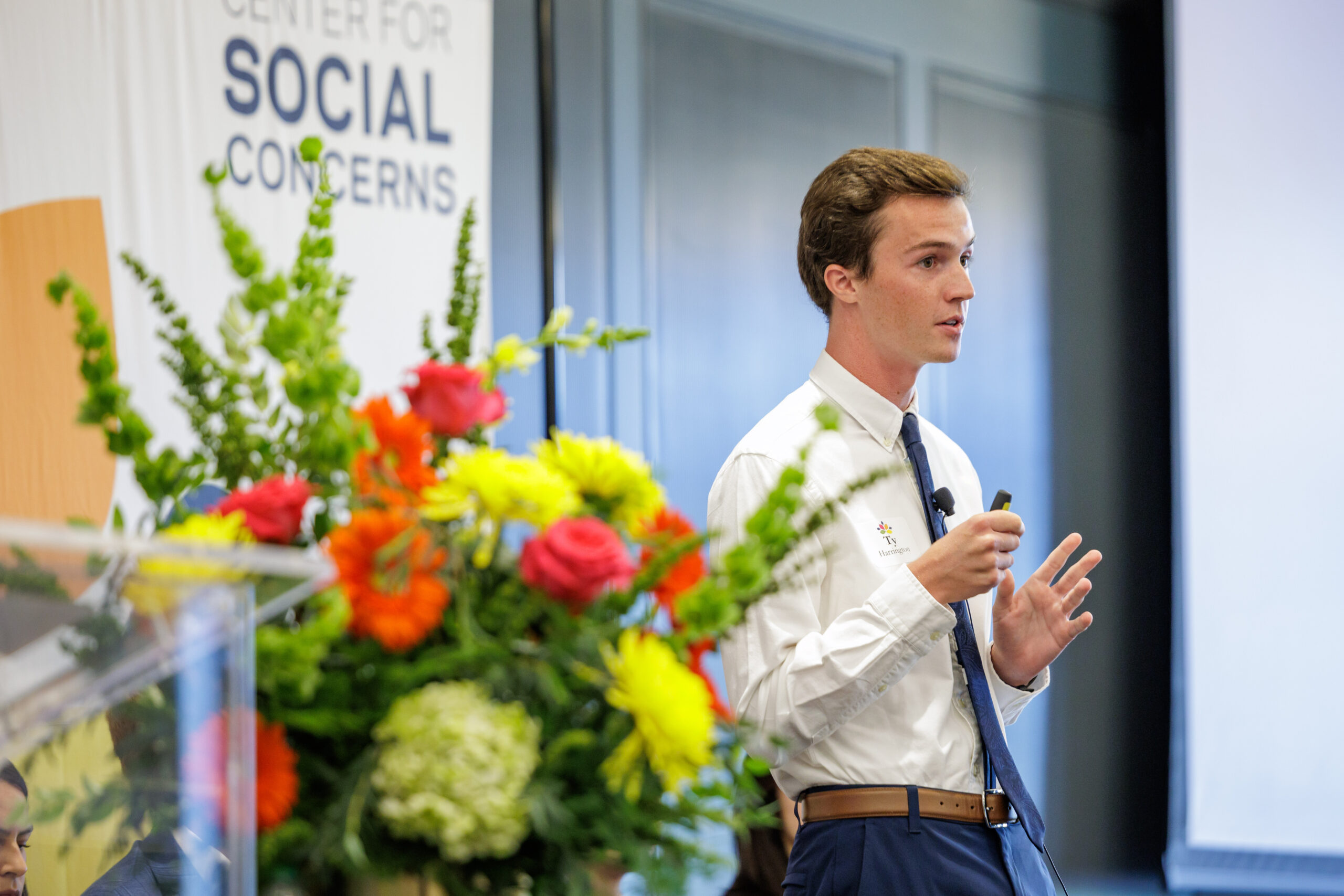“We all want to be seen”
Institute for Social Concerns partners with Building Services staff on new mural and exhibit
February 12, 2025
“Everybody wants to be seen,” said Bridget Filipski. “No matter what job you do, we all want to be seen.”
Filipski is leader of a crew of 16 University of Notre Dame custodial workers—nine of whom call countries other than the United States their home.
Filipski thought of the stories she had heard from her crew over the 20 years she has worked at the University, many of them harrowing.
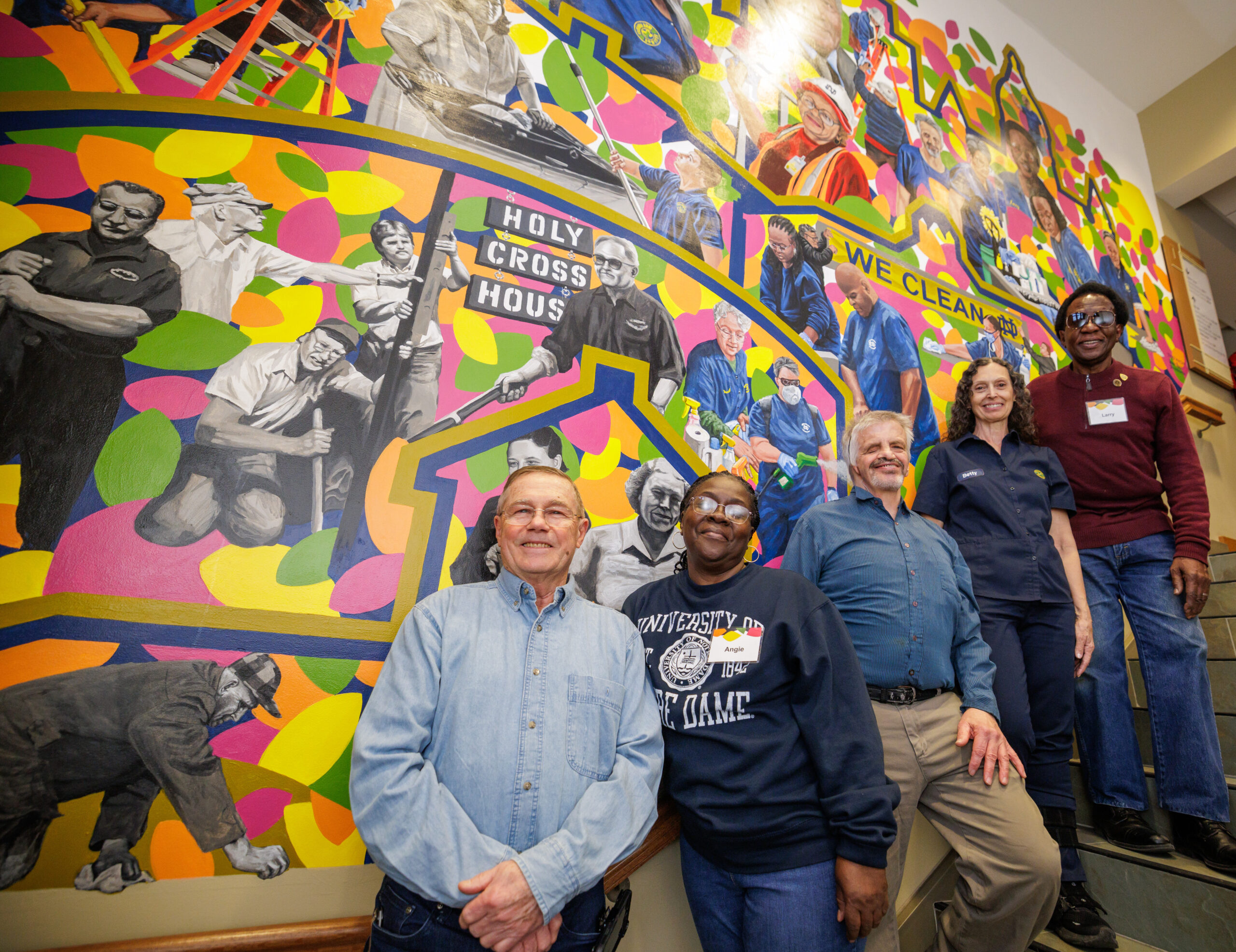
There’s the Vietnamese woman whose parents were killed and whose village was destroyed when she was young. After surviving in the jungle by foraging for food, this woman was adopted by a family who made their way to the United States. En route, their ship was marauded by pirates, who stole everything they had. She arrived in the United States with nothing and eventually found her way to the University.
There’s the Bosnian woman whose home built with her husband’s own hands was destroyed in the war in the 1990s. After her husband was captured, this woman was left to fend for herself and her two young children. They hid in a cave by day and pilfered nearby gardens for food by night. She found her way out of Bosnia and to South Bend, learning English and landing a job at Notre Dame, where she met Filispki. Telling her friend stories too tender to share with anyone else, this woman stated, “War is hell on earth.”
Then there’s the elderly African American man who was one of the longest-serving Building Services employees on record. As a child in the 1950s, he worked with his mother and 11 siblings on a cotton plantation in the US South, a holdover of the legacy of slavery that persisted into the era of Jim Crow. At a young age, he and his twin brother were forced to cut their father’s body from a tree and roll it into an unmarked ravine. Their mother alerted them that they needed to be ready to run at a moment’s notice, as someone was working on a plan to get them out. That someone eventually arrived in a red pickup truck and took them to Chicago, where a group of nuns took them in and eventually moved them to South Bend, where he found a job at the University.
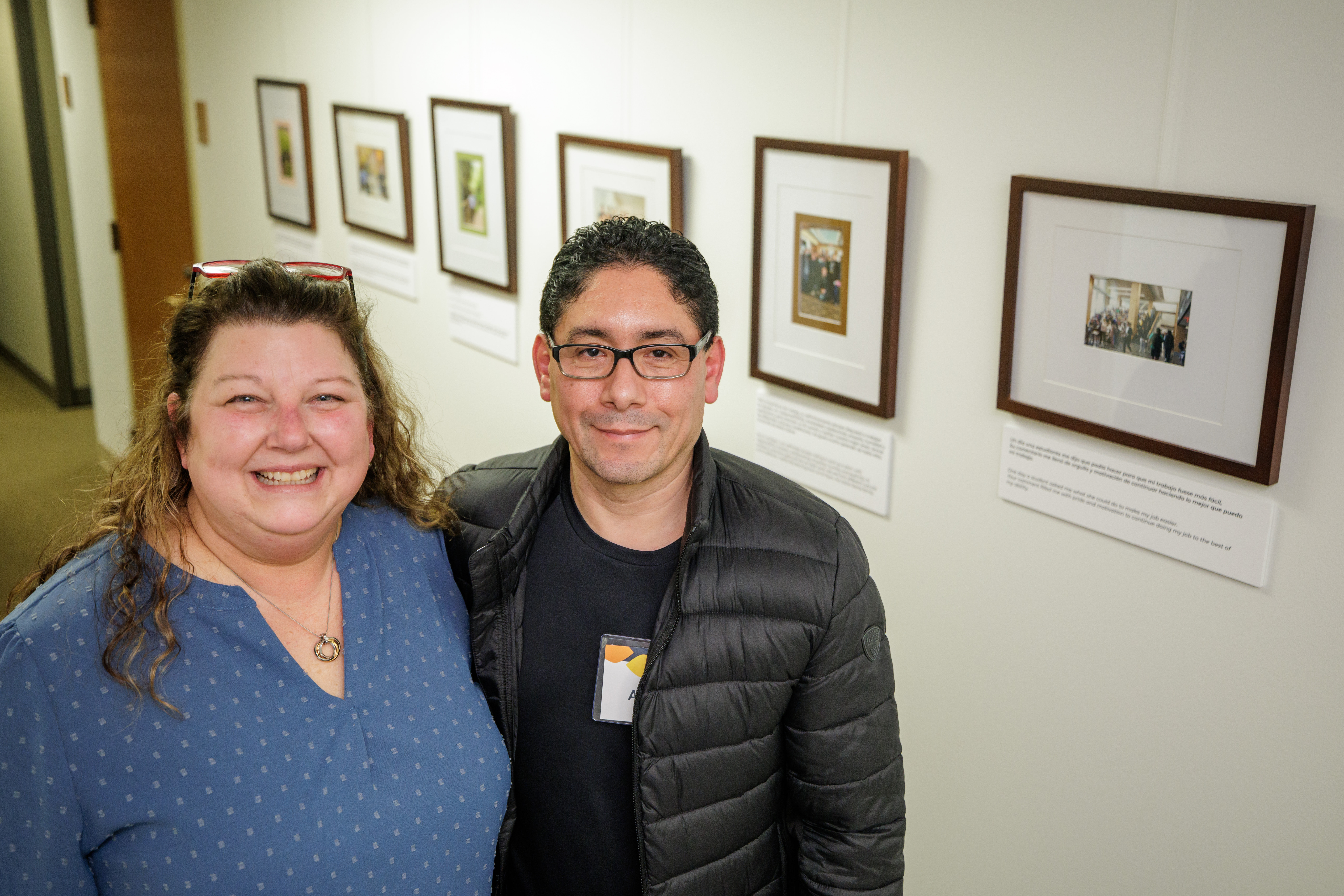
Such stories represent just a fraction of those held by the over 250 Notre Dame Building Services employees, who provide custodial services to 150 buildings at the University. But since their essential work is so often done after hours or behind the scenes, this work, and the workers themselves, are left unseen.
One evening last June, while working on the third floor of Bond Hall, Filipski noticed a series of ceiling tiles painted by students who traveled to the University from various parts of the world. Perhaps, she thought, there would be a way for her colleagues to tell their stories through art as well. But where at Notre Dame could she turn for such a project? Who would care to tell the stories of her fellow custodial workers?
Undeterred, Filipski wrote an email addressed to anyone at the University who might be willing to listen. “The University teaches and tells stories about the trials and tribulations of the brilliant minds that have studied here from around the world,” she wrote. “Many of the educated minds with degrees come back or stay and make the University their employer. We hear and read those stories of career advances and promotions with best wishes. I am looking for the creation of art that shows a different ‘story of employees.’”
When Michael Hebbeler, assistant director of community partnerships and programs at the Institute for Social Concerns, read Filipski’s email, he immediately knew this was a project he wanted to take on. Hebbeler has previously worked on murals in the local community, including at La Casa de Amistad and Foundry Field. He also co-teaches Art and Social Change with Geneva Hutchinson, a photographer and Notre Dame MFA who is currently postdoctoral research scholar at the institute. This opportunity seemed perfect for a course that explores the implications of the institute’s refrain that “a just world is a beautiful world.”
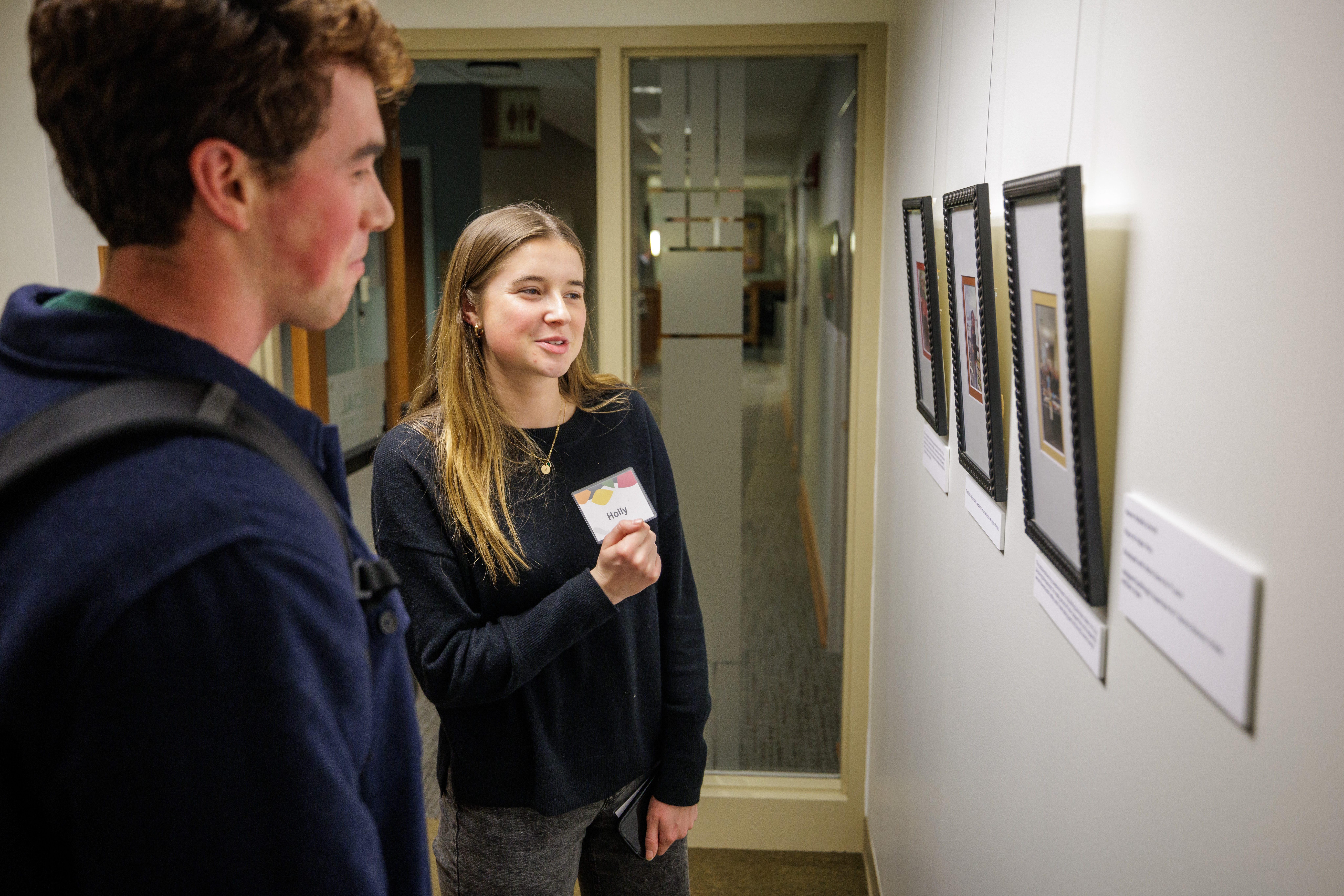
The course, as with all the work of the institute, invites research that is collaborative. Research that is embodied. Research that is done in and with community. In proximity. It seeks research that is relational, formational, and transformational. Research that is oriented toward justice, toward human dignity and flourishing, and toward the common good.
Hebbeler and Hutchinson thus invited Filipski and fellow Building Services staff to the launch of the course in the Geddes Hall Coffee House. They asked the workers to bring photographs of themselves, photos that told their stories through their own lens.
They also invited local artist David Martin, whose previous work includes pieces featured in the Pokagon Art Collection in the Coffee House, to join the class in a brainstorm about how best to honor the workers through art. Together, they read documents from Catholic social teaching that emphasize the dignity of workers.
Out of that first class session two approaches to the project emerged: collaborative, photography-based research called photovoice and a mural of Building Services workers drawing from their own photography.
Finally, someone would tell the stories of these workers—or rather, would give them the tools and resources to tell their stories themselves.
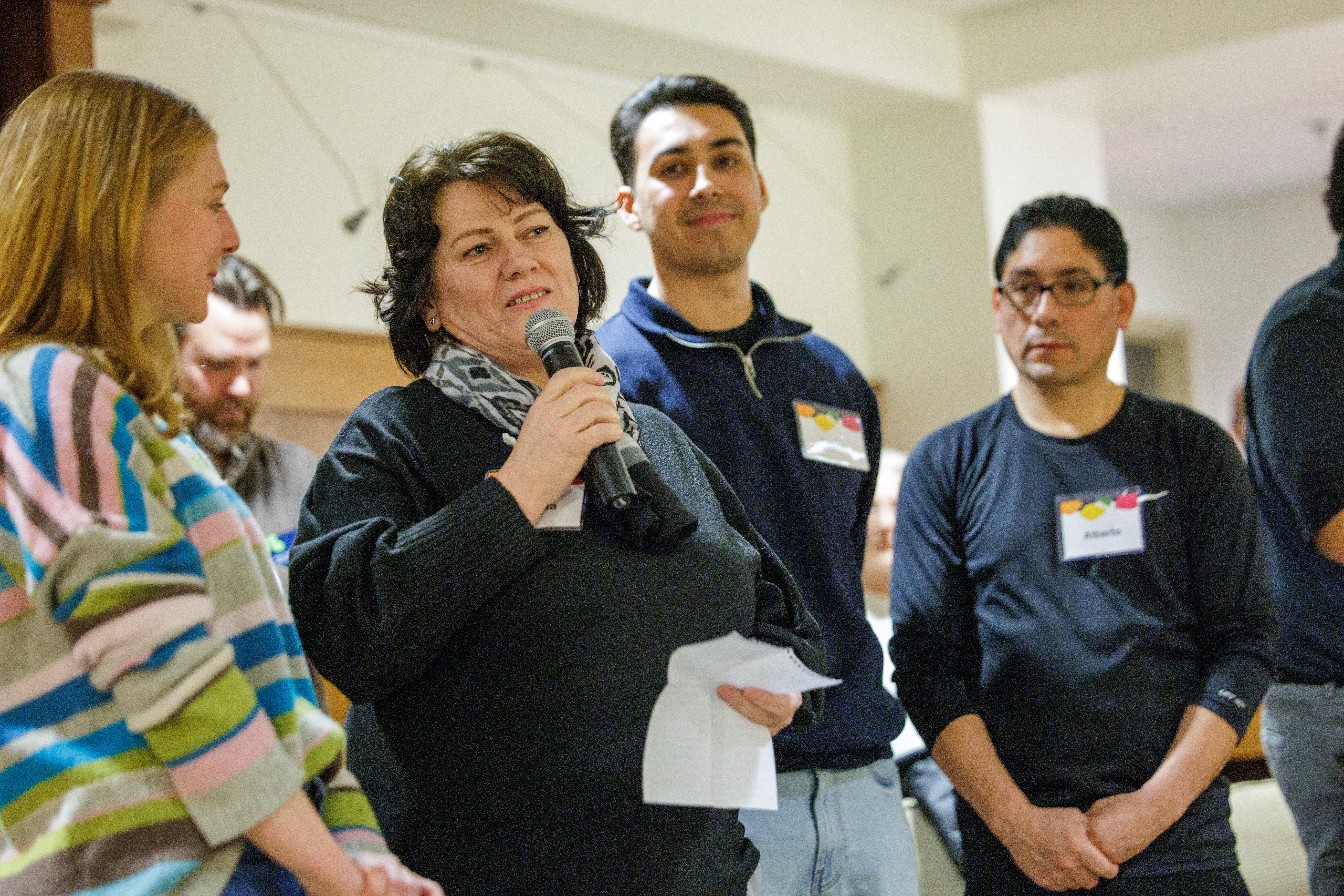
Not only did the course give the workers an opportunity to tell their stories; it also brought them into proximity with students. Over the course of the semester, as they shared their lives and stories together, the workers and students formed deep bonds.
Junior Laura Arenth, a preprofessional major, was paired with sisters-in-law Sabaheta Alic and Hasena Begic, custodial workers from Bosnia. Arenth’s weekly conversations with Alic and Begic, along with her course readings from Catholic social teaching, led her to think deeply about the connection between dignity and work and to appreciate the humanity and personhood of workers beyond their occupation.
“As they shared pictures that captured their Bosnian roots, I discovered the realities of the Balkan Wars and how familial love has no geographic borders,” Arenth wrote in her final paper. “I could have read about the Bosnian Wars in a textbook or done some online research, but this would have generated facts, dates, death counts, and other numbers. Stories of survival and hope tend to be buried beneath such things. However, Sabaheta and Hasena’s photos helped teach me about the war on an individual level and the tenacity it takes for an immigrant to establish their footing in the United States.”
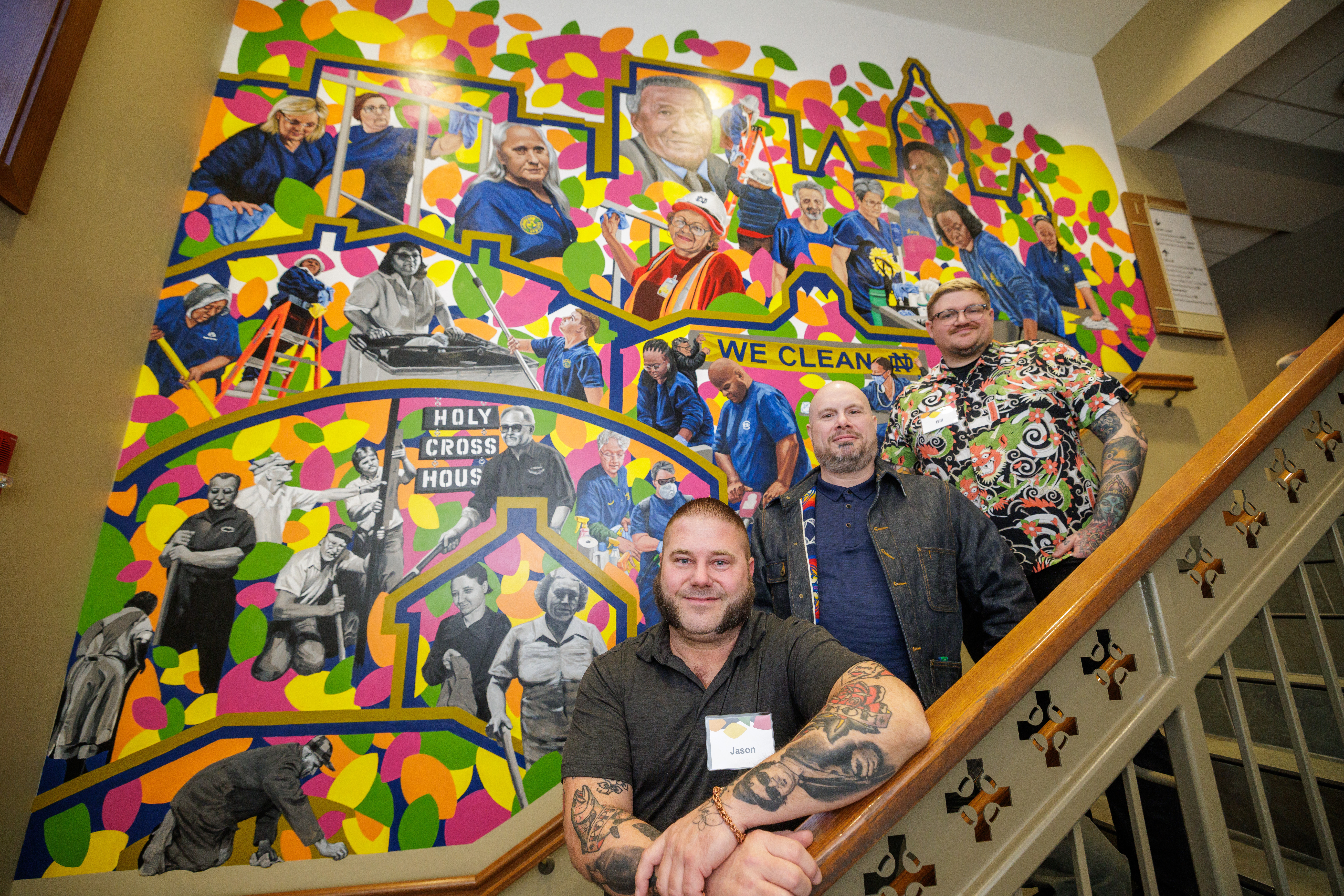
On the evening of January 29, the institute hosted a celebration for the photography exhibit and mural at Geddes Hall. The air was jubilant, almost festive.
Among the many dozens in attendance were supporters of the project like Julie Boynton, senior director of interior architecture for Facilities Design and Operations, and Chris Hatfield, senior director of Building Services, as well as the artists Martin, Jason Haney, and Bill Fashbaugh and their family members. But the stars of the night were the workers themselves, along with the students who came alongside them and helped guide their projects throughout the fall semester.
Nibbling on elegant hors d’oeuvres and sipping on raspberry lemonade, the rapt crowd listened as Building Services workers and their student partners told of their projects.
Among the presenters were Arenth and Begic. Arenth shared how her experience in the course expanded her understanding of justice beyond simply fairness to include the recognition of others’ inherent worth and dignity. Begic explained how she comes from a family of nine siblings, and for her, Notre Dame feels like just a slightly bigger family. “This was not just about Building Services,” she said. “This was about the students too. We shared, we talked about their experiences. We are different, but we are the same.”
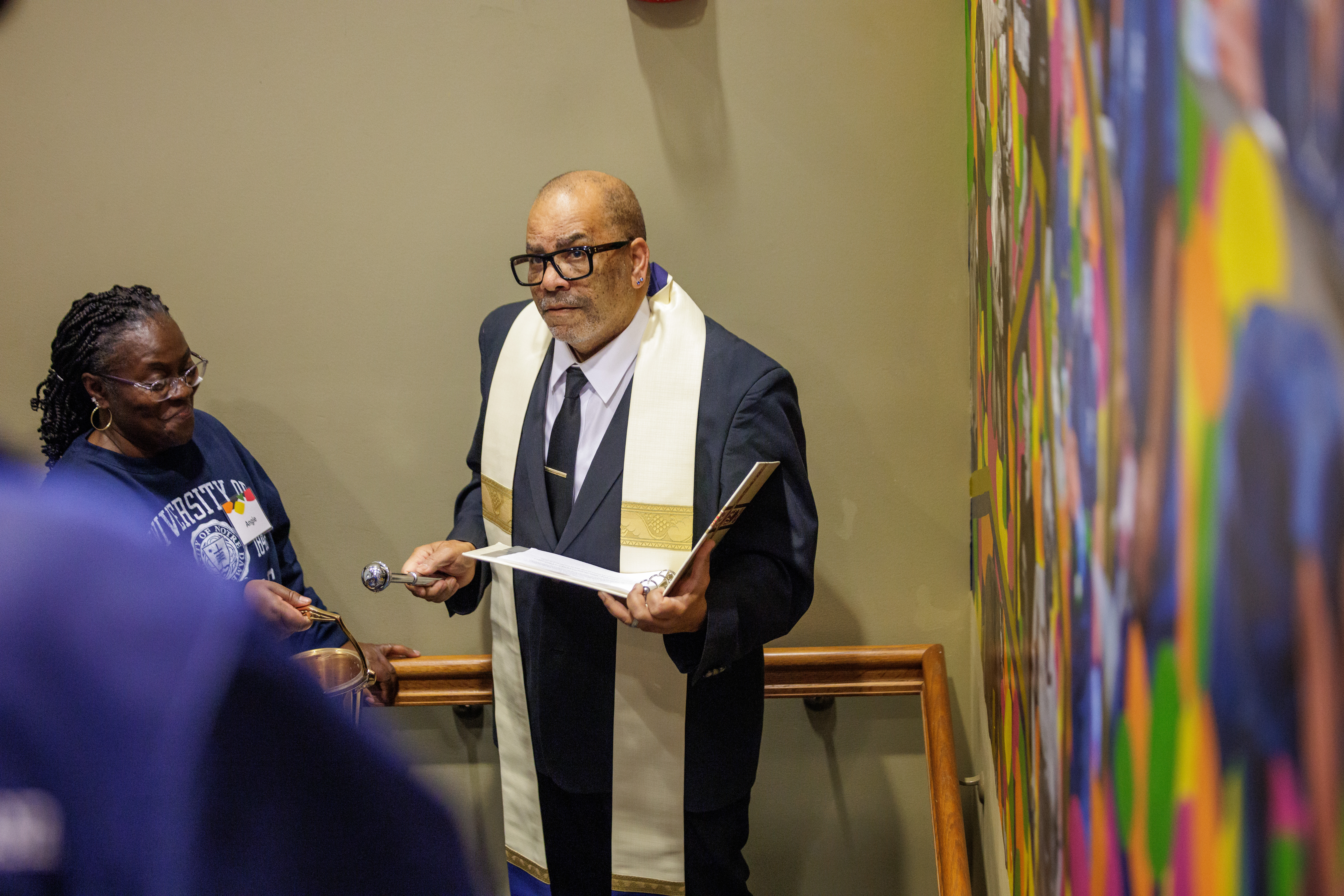
After the opening remarks, the crowd shuffled side-by-side down the hallway to the west stairwell and packed in as another supporter of the project, Rev. Hugh Page, vice president for institutional transformation and advisor to the president, offered a blessing over the mural.
“Gracious and loving God,” he prayed, “you make clear to us in sacred scripture the dignity of labor and the value of laborers. Grant that this mural—making visible the experiences of our friends and colleagues in Building Services—may be a reminder to all in our community of those whose work on the front lines and behind the scenes, visible and hidden, during our waking hours and at night, in weather both seasonable and inclement, is essential to our common life and connects us as members of the Notre Dame family.”
The stairwell echoed with laughter as everyone realized together that it would be a bad idea for Page to sprinkle the mural, which had barely had time to dry before the celebration.
“I cannot sprinkle the painting,” Page quipped, “but I shall sprinkle you all.”
While sprinkling the workers, students, and artists nearest to him, he commissioned the mural with these words: “May this mural serve as a mirror of the virtues we hold sacrosanct and an icon of the fully actualized and beloved community we seek to nurture right here, right now.”
Afterward, Filipski beamed with pride. Her idea to recognize her crew had blossomed into more than she could have ever imagined. Her friends were immortalized in Geddes Hall, and the celebration was icing on the cake.
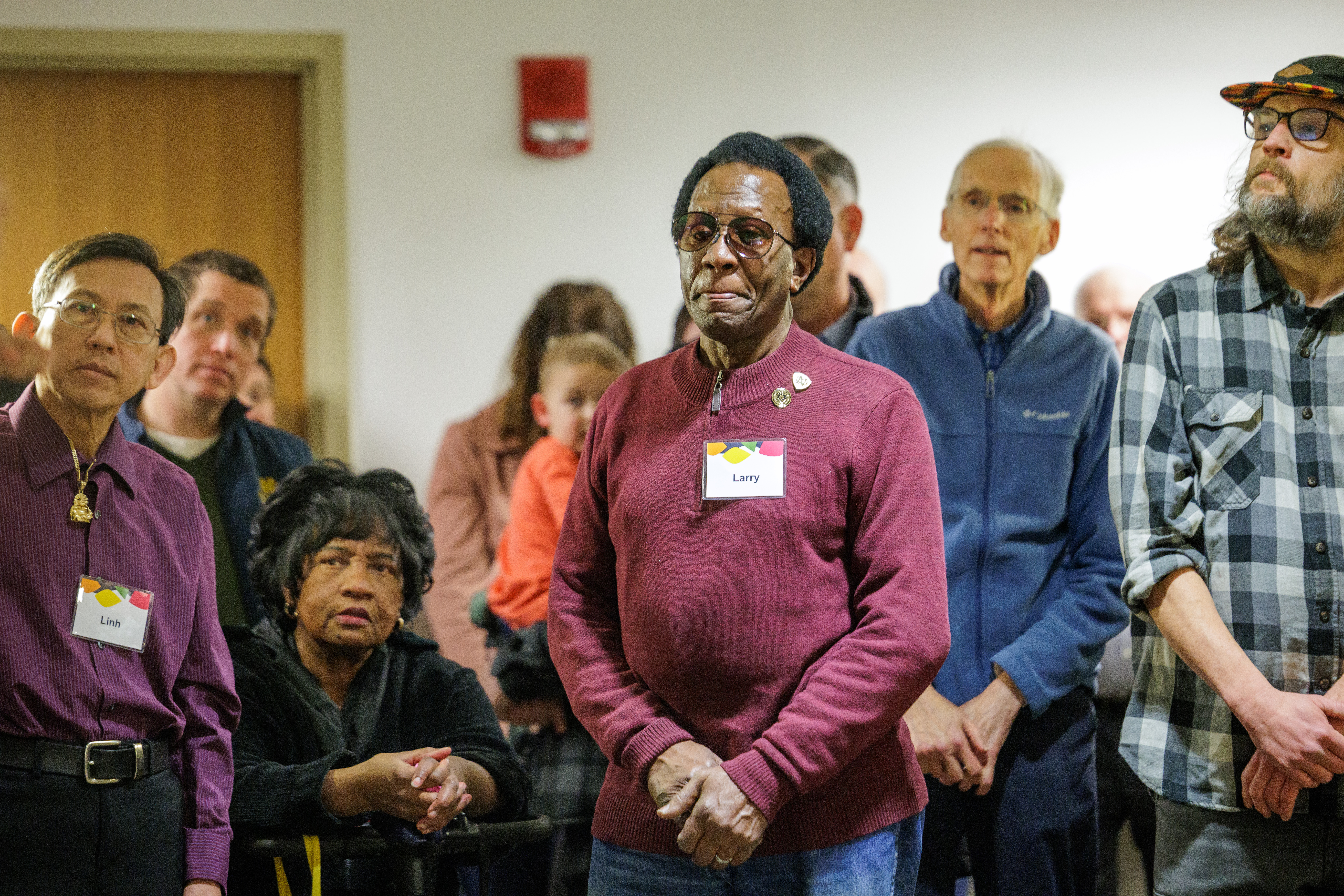
For some, this celebration was long overdue.
“Been out here 47 years,” said retired custodian Larry Robinson at the celebration.
“He retired in 2019,” his wife, Linda, added.
Robinson began working at the University in 1972, after spending his childhood in Parkin, Arkansas.
On this evening celebrating him and his work, Robinson reflected with a smile, “They did so much for me—the students. They respect me.”
Respect. Dignity. Beauty. Justice. These values are on walls in full color at Geddes Hall. The exhibit will be on display through the end of March. All are welcome to explore the gallery throughout the first floor and the mural in the west stairwell. If you arrive in the late afternoon between work shifts, you just might run into someone there with a story to tell—or someone whose image is on the wall. Be sure to say hello and to take some time to listen.
Images by Peter Ringenberg Photography.
Gallery: see more images from the celebration.
Video: check out this timelapse of the mural creation on YouTube or this highlight reel on Instagram.
Local news: watch this story from WSBT about the celebration.
Related Stories
-
ReSearching for the Common Good: Jenifer Guadalupe Solano Becerra
-
Engaging South Bend—University faculty explore research collaborations with regional organizations through institute’s Engage South Bend tour
-
Two paths, one destination—Postbaccalaureate research fellows join the institute to research mass incarceration
-
Extraordinary good for this world—Researching for the Common Good Symposium celebrates undergraduate summer research
-
Social Concerns Summer Fellow returns to India for ongoing research





